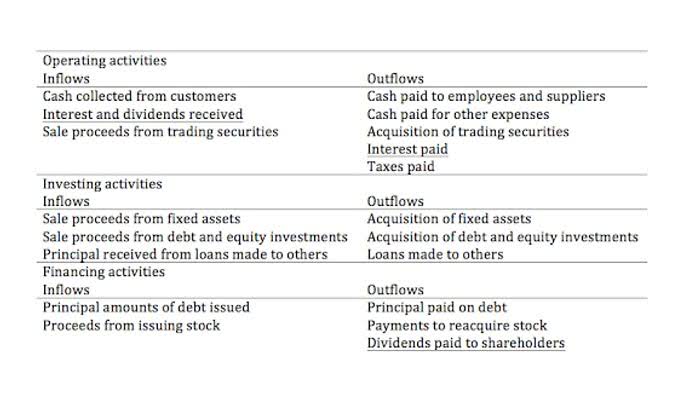How to Report Contingent Liabilities in Your Companys Financial Statements

In a few cases, an analyst may present two scenarios, one that includes the impact on the company’s cash flow and one that does not. Recording a contingent liability is a noncash transaction because it has no initial impact on cash flow. Instead, the creation of a contingent payroll liability notifies stakeholders of a potential liability that could materialize in the future.
What Are the 3 Types of Contingent Liabilities?

Generally accepted accounting principles (GAAP) require contingent liabilities that can be estimated and are more likely to occur to be recorded in a company’s financial statements. Contingent liabilities have implications for financial statements as well as potential investor impacts. The likelihood of occurrence and the measurement requirement are the FASB required conditions. A contingent liability must be recognized and disclosed if there is a probable liability determination before the preparation of financial statements has occurred, and the company can reasonably estimate the amount of loss.
Possible Contingencies
The following is in the context of a legal claim – i.e. a single obligation. While earnouts can help buyers and sellers come to a mutual agreement in a transaction, it can be a complex process. Whether you’re a buyer or seller, having the right team is key to your transaction and overall accounting liability. We know that the customers are going to bring back the MacBook and claim a warranty due to various issues. Based how to record a contingent liability on the historical data, 5% of the product will be broken within 12 months and claim the warranty. Company is getting a laws suite from the client regarding products’ safety.
Define and Apply Accounting Treatment for Contingent Liabilities
- These liabilities arise when the outcome and liability are only determined by a future event, such as a lawsuit, guarantee, or warranty claim.
- Our example only covered the warranty expenses anticipated from the 2019 sales.
- If the likelihood is deemed probable or in some cases reasonably possible, you’ll need to estimate the potential monetary impact.
- It is unlikely that a contingency related to a legal claim would meet these criteria.
In thisinstance, Sierra could estimate warranty claims at 10% of itssoccer goal sales. The measurement requirement refers to thecompany’s ability to reasonably estimate the amount of loss. Eventhough a reasonable estimate is the company’s best guess, it shouldnot be a frivolous number. For a financial figure to be reasonablyestimated, it could be based on past experience or industrystandards (see Figure 12.9). It could also be determined by the potentialfuture, known financial outcome. Pending litigation involves legal claims against the businessthat may be resolved at a future point in time.
Importance Of Considering Contingent Liabilities

A contingent liability is a potential obligation that might arise in the future, dependent on the outcome of a specific, uncertain event. It’s not an actual liability until the triggering event occurs, at which point it may become an absolute obligation. Contingent liabilities are potential financial obligations that a company may have to pay in the future, depending on the outcome of an uncertain event. Unlike regular liabilities, contingent liabilities are not recorded as current obligations on the balance sheet but are disclosed in the notes to financial statements. These liabilities arise when the outcome and liability are only determined by a future event, such as a lawsuit, guarantee, or warranty claim.

- Assume that Sierra Sports is sued by one of the customers who purchased the faulty soccer goals.
- This financialrecognition and disclosure are recognized in the current financialstatements.
- Different regions or industries may require adherence to specific frameworks like GAAP or IFRS.
- The exact location on the balance sheet can vary based on the nature of the contingent liability.
However, at the time of the company’s financial statements, whether there will be a settlement liability and the date and amount of any settlement have yet to be determined. This is an example of a contingent liability that may or may not materialize in the future. If these criteria aren’t met but the event is reasonably possible, organizations must disclose the nature of the contingency and the potential amount (or range of amounts).

#3 – Pending Investigation Or Pending Cases
This amount could be a reasonable estimate for the parts repair cost per soccer goal. Since not all warranties may be honored (warranty expired), the company needs to make a reasonable determination for the Bookkeeping for Startups amount of honored warranties to get a more accurate figure. A liability which is recorded for the cost of future claims that are anticipated as a result of product warranty agreements is called warrant liability. If a company has strong fast-growing earnings and a steady cash flow position, a contingent liability will have little impact on its stock price unless it is huge.

